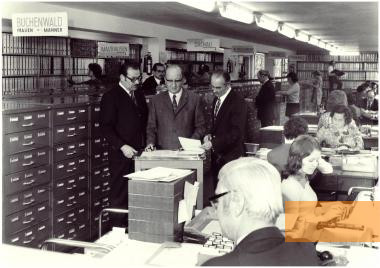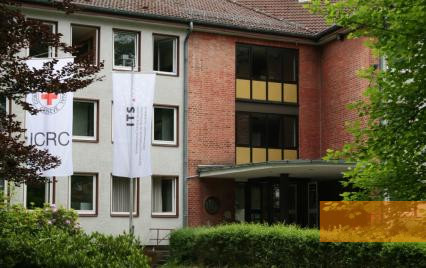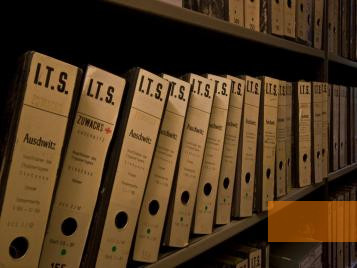The International Tracing Service in Bad Arolsen is one of the worldwide largest archives on the history of National Socialism. Located here are documents on the fates of concentration camp prisoners, forced labourers and other civilian victims of the National Socialist regime.
Already in 1943, the Allied Forces in London transformed the Department of International Affairs at the British Red Cross in London into a Tracing Bureau. The Tracing Bureau moved along with the war front, from London to Versailles and from there to Frankfurt am Main. In 1946, the Allies moved the tracing bureau into the Hessian town of Arolsen due to its central location between the four occupying zones. From 1954 on, the International Committee of the Red Cross took over the administration of the »International Tracing Service« (ITS).
The ITS documents the fates of millions of civilian victims who perished under National Socialism or died in the post-war period due to the war or persecution. Many of them were reported as missing by their relatives.
The ITS preserves historical documents on National Socialist persecution and makes them accessible for research. This includes original documents from the concentration camps, records on forced labourers and »displaced persons«. In order to make these records available for future generations, the ITS is restoring, preserving and digitalising them. The ITS also provides information to requests by victims of National Socialism and their relatives. Scientists, research institutions, memorials, universities or museums may also access the ITS archives for their work since they were opened to the public in November 2007. This opening marks the beginning of the ITS' transformation from a tracing service to an archive for historical research.
- Name
- Internationaler Suchdienst Bad Arolsen
- Address
-
Große Allee 5-9
34454 Bad Arolsen - Phone
- +49 (0) 5691 629 0
- Fax
- +49 (0) 5691 629 501
- Web
- http://www.its-arolsen.org
- email@its-arolsen.org
- Open
- Monday to Thursday 8.00 a.m. to 5.00 p.m., Friday 8.00 a.m. to 1.00 p.m.
- Possibilities
- Archive, library, newsletter, yearly report, brochures, and guided tours






